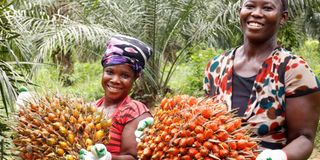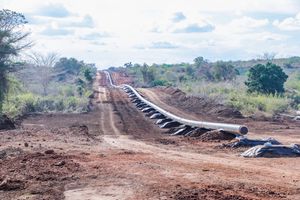Indonesia investors to help Tanzania boost palm oil output

What you need to know:
- The current average production capacity in Indonesia, the world’s largest producer and exporter in the world, is seven tonnes of palm oil per ha a year.
Jakarta. Palm oil production in Tanzania is set for a major boost should plans outlined with the support of Indonesia come to fruition.
The plans, some still on the drawing board and others already under implementation, aim to make the country self- sufficient in cooking oil and for export.Initially, the renewed push for production will be focused on the Kigoma region, the traditional cultivation zone of oil palm trees and later to other regions, among them Mbeya and Coast.
The Tanzania Agricultural Research Institute (Tari) through its Tumbi and Kihinga centres in Tabora and Kigoma regions respectively will be roped in the palm oil programme.
“Tari will be involved because we need genetic material with high yielding capability,” said Dr.
Dwi Asmono, the director of an Indonesian agro-trade company called Sampoerna Agro.
He was in Tanzania a few weeks ago during which he visited Kigoma and other potential sites for palm oil revival programme as well as the Arusha-based Tanzania Plant Health and Pesticides Authority (TPHPA).
“We expect strong collaboration with these institutions in order to turn around the palm oil sub-sector” he told The Citizen during a briefing on the potential areas of economic cooperation between the two countries.
He said although the Kigoma region accounted for 80 percent of palm oil produced in Tanzania annually,the genetic material has a much lower yield.
According to Dr Asmono, the palm oil trees found in Kigoma and elsewhere in Tanzania were relatively wild, capable of yielding only 1.6 tonnes per hectare per year.
The current average production capacity in Indonesia, the world’s largest producer and exporter in the world, is seven tonnes of palm oil per ha a year.
The South East Asia nation, has a total of 16.4 million hectares under oil palm trees and generates $25 billion a year through exports of palm oil.
Dr Asimono said Indonesian companies would support Tari and allied institutions in introducing high yielding palm tree varieties through application of proper agronomic practices.
Palm oil was made one of Tanzania’s strategic agricultural crops in 2018 in order to boost local production of cooking oil.
Currently, it is estimated that 80 percent of cooking oil consumed in Tanzania is derived from sunflowers.




